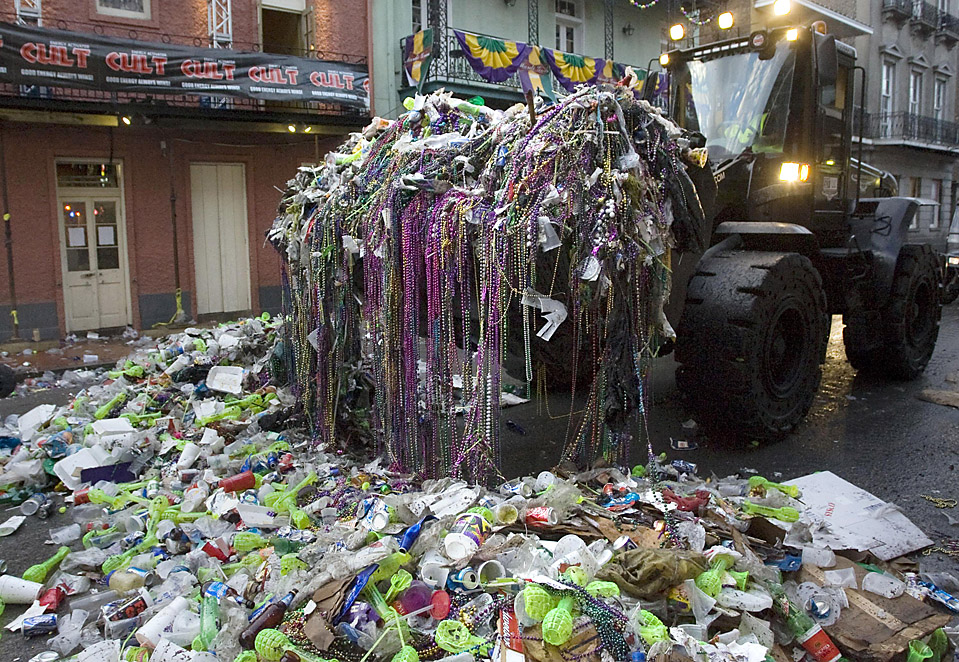Mardi Gras, or Fat Tuesday, marks the last day of indulgent festivities before Ash Wednesday and the Lenten practice of sacrifice and atonement. The typical Mardi Gras parades of modern-day New Orleans are spectacles of abundance as krewes wearing colorful attire ride decorated floats from which they throw plastic beads, cozies, or other cheap trinkets to the spectators crowded together shouting with raised hands waving to be seen. According to Mardi Gras New Orleans, “every year 25 million pounds of used Mardi Gras beads are thrown away.”[1] This has inspired Arc of Greater New Orleans to create a bead recycling program. Yet despite efforts to recycle, Mardi Gras parades leave enough trash to warrant a parade of tractors and sweeps to follow in their wakes. Moreover, tossed beads often get stuck on telephone wires and tree branches, where they stay until weathered enough to fall to the ground as litter, and the environmental impact is great. In “The Destructive Life of a Mardi Gras Bead,” Redmon investigates the beads’ environmental impact, citing environmental scientist Howard Mielke who has studied the links between lead, the environment and skin absorption and found “the majority of lead in the soil is located directly alongside the Mardi Gras parade routes….” The beads themselves have a number of toxic chemicals and could be dangerous to children.[2]
Dangers aside, the very point of Mardi Gras is to celebrate excess and waste—a celebration when we can lose our heads and revel, spending what Bataille would call the “Accursed Share.” Moreover, Mardi Gras, a holiday with ancient roots, is a gumbo of cultural abundance with European, African, and American Indian influences. These cultural influences can be heard in the rich Mardi Gras music. Thus, The Turnip Truck(s) offers the following parade of songs:
"Mardi Gras Mambo," The Meters
"The Second Line," Rebirth Brass Band
"Iko, Iko," The Dixie Cups
"Go to the Mardi Gras," Professor Longhair
"Danse De Mardi Gras," Les Freres Michot
[1] http://www.mardigrasneworleans.com/news/what-to-do-with-surplus-mardi
[2] “Independent research on beads collected from New Orleans parades has found toxic levels of lead, bromine, arsenic, phthalate plasticizers, halogens, cadmium, chromium, mercury and chlorine on and inside the beads. It’s estimated that up to 920,000 pounds of mixed chlorinated and brominated flame retardants were in the beads.” https://theconversation.com/the-destructive-life-of-a-mardi-gras-bead-71657



